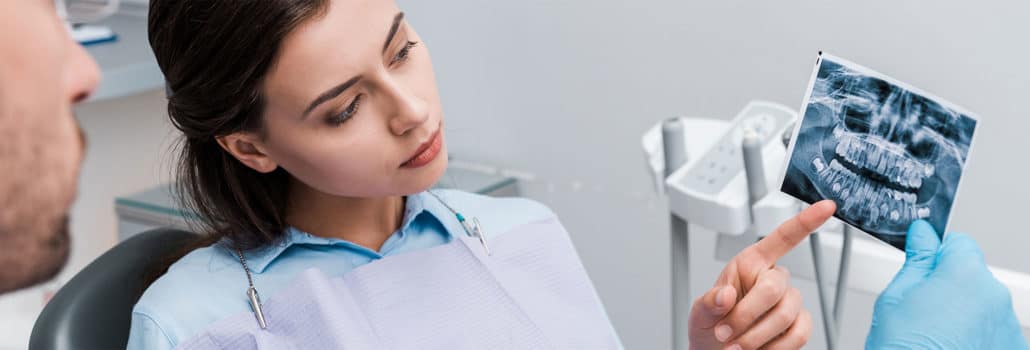
Periodontitis treatment
The primary goal of our dental work is to preserve your natural teeth. Periodontology is a key component of this. It deals with the structures surrounding the tooth (para = around, odont = tooth).
Did you know that periodontitis (formerly periodontosis) is one of the most widespread infections?
Almost 80% of adult Germans suffer from a more or less severe form. Regular, large-scale population studies have recorded a decline in caries for years, while periodontal disease is steadily increasing.
(German Oral Health Study DMS)
What exactly is periodontitis?
Periodontitis is a chronic bacterial infection disease that results in the degradation of the periodontium. The periodontium is the tooth-bearing bone, the fine fibers that suspend the tooth in the bone compartment (periosteum), and the dental cementum to which these fibers attach. If this foundation is destroyed, the tooth no longer has any support, becomes loose and ultimately falls out. The progression is caused by bacteria and the body’s own defense reactions. Gum pockets are formed, in which bacteria multiply and form firmly adhering tartar (concrements).
How do I notice periodontitis?
Frequently, periodontitis is not recognized until it is too late, because it is usually painless! The body’s own alarm system “pain” does not work here. Other indications such as bleeding gums, an unpleasant taste in the mouth or tooth migration are often not attributed to periodontitis. Therefore, it is essential to regularly measure the depth of the gingival pockets with a special probe and take X-rays to evaluate the jawbone.
What are the treatment methods?
Although the field of periodontology is not new, scientific research has made interesting advances in recent years that can significantly improve treatment options and thus long-term success.
The most important goal of periodontal treatment is consistent lifelong infection control, which means that harmful bacteria must be reduced to a minimum. To achieve long-term oral health, it is important that all “pockets of debris” are permanently eliminated. These can be leaking fillings, protruding crown wheels or wisdom teeth that cannot be maintained. We also need your active cooperation in order to jointly develop an efficient oral hygiene program at home.
What happens during a periodontitis treatment?
The long-term success of the treatment depends on consistently performing all phases of treatment, with periodontal surgery only becoming necessary in particularly severe cases. The course of treatment is listed below.
1. Disinfection phase
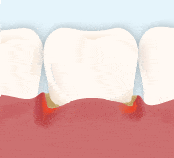
The long-term success of the treatment depends on consistently performing all phases of treatment, with periodontal surgery only becoming necessary in particularly severe cases. The course of treatment is listed below.
2. Periodontal preventive treatment (PAV)
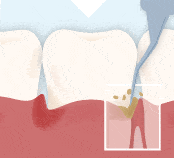
This involves thorough cleaning of all teeth above the gumline. Our experienced dental prophylaxis assistants will also work with you to develop an effective oral hygiene program at home. Generally, 2-3 appointments are necessary for this. We then measure the gum pockets to the millimeter (periodontal status) and take an X-ray to get a very precise picture of your current situation. In severe cases, it may be helpful to perform a painless bacterial test.
3. Periodontal treatment (PAB)
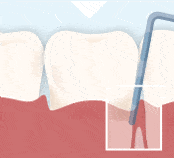
The actual periodontal treatment is performed over 2 consecutive days with local anesthesia. This involves thorough cleaning and smoothing of the root surfaces under the gum line and removal of any stubborn calculus. In severe cases, this treatment should be accompanied by the administration of a special antibiotic.
4. Periodontal follow-up (PAN)
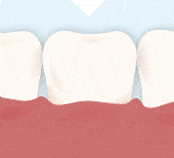
One week after the periodontal treatment we check the healing process and polish the tooth surfaces if necessary.
5. Reevaluation with UPT
10 weeks after the periodontal treatment we check (re-evaluate) the periodontal status to compare it with the initial status. This allows us to assess the results to the millimeter and determine whether the set treatment goals have been achieved. At this appointment, the first, approximately one-hour long, thorough post-cleaning is also performed: “supportive periodontitis treatment” (UPT).
6. Periodontal surgery
Periodontal surgery is only necessary when bone destruction has progressed so far that conventional periodontal treatment has reached its limits. Advances in research have now made it possible, under very specific conditions, to regenerate the structures of the periodontium, in other words to allow them to grow again. Various “bone replacement materials” are used in this process. This is a major breakthrough, as it often allows teeth to be preserved that would have had to be removed in the past!
7. Supportive periodontitis treatment (UPT)
UPT goes well beyond the scope of professional tooth cleaning (PZR), because it involves repeated expert checks of periodontal “weak spots” and, if necessary, renewed local treatment.
Periodontitis is a chronic disease. This means that the result of periodontitis treatment, namely the reduction of bacteria below a critical threshold, must be actively maintained. Consequently, long-term success depends on consistent UPT and your oral hygiene program at home! In the first year after periodontal treatment, UPT should be performed every 3 months to keep the bacteria safely in check. After 1 year, the gingival pockets are measured again. If the situation has stabilized, the intervals can be extended to a maximum of 6 months.
Is all the effort really worth it?
This is a legitimate question, considering the time invested and the costs incurred and after intensive training and our daily experience, we can answer this question with an unequivocal “yes”! In addition to oral health and masticatory function aspects, there are proven close links between periodontitis and your general health. This is because periodontitis bacteria can travel from the mouth into the body’s entire circulatory system. Links to atherosclerosis (cardiovascular disease, stroke), diabetes, lung disease, and pregnancy complications have been investigated in many scientific studies.
Can every tooth be saved?
Even the most modern treatment methods have their limits. For example, if a tooth is already too weakened in the foundation, or there are other problems besides periodontitis. Therefore, we always discuss your individual case in a personal consultation before treatment.
What will the costs be for me?
Provided that the tooth in question meets the periodontal guidelines, the statutory health insurance companies include periodontal treatment in accordance with the principle of economic efficiency (“sufficient, economical, expedient”). For teeth that are already weakened, the statutory health insurance primarily provides for removal (extraction). When making your decision, please keep in mind that with consistent treatment, even supposed “wobbly teeth” can often be preserved in the long term, thus avoiding the need for dentures. We will gladly give you the opportunity to have these teeth treated as well, if a treatment attempt seems reasonable from our experience. These will then be billed privately according to the dentists’ fee schedule (GOZ). Periodontal preventive treatment, supportive periodontitis treatment, and modern periodontal surgery are generally not included in the catalog of services provided by the statutory health insurance companies. Private health insurance companies may also charge you a co-payment for certain insurance contracts or particularly complex cases.
Of course, we will provide you with a cost plan based on the findings prior to treatment so that you can estimate the costs involved.
Contact us, we will be happy to advise you on our treatment options and methods. Your practice team
Your Dentist in Berlin
Right next to the Charité
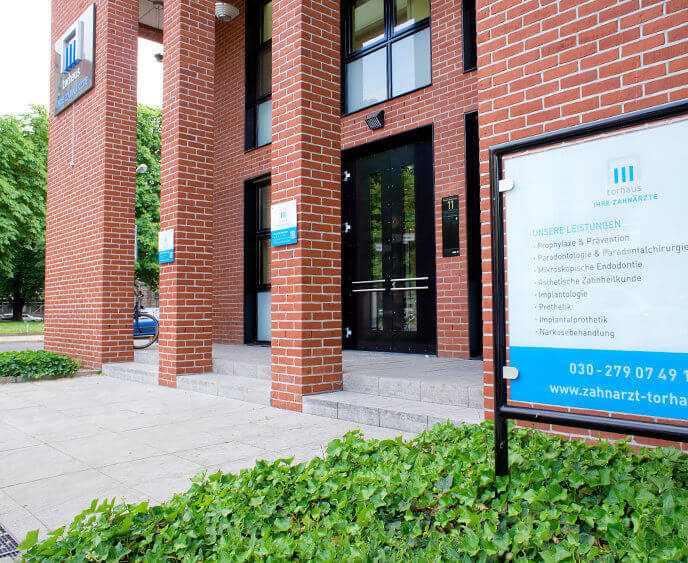
- Mon - Fri open from 8:00 - 20:00
- 030 95 99 99 400
- Robert-Koch-Platz 11 · 10115 Berlin Mitte
How to find us